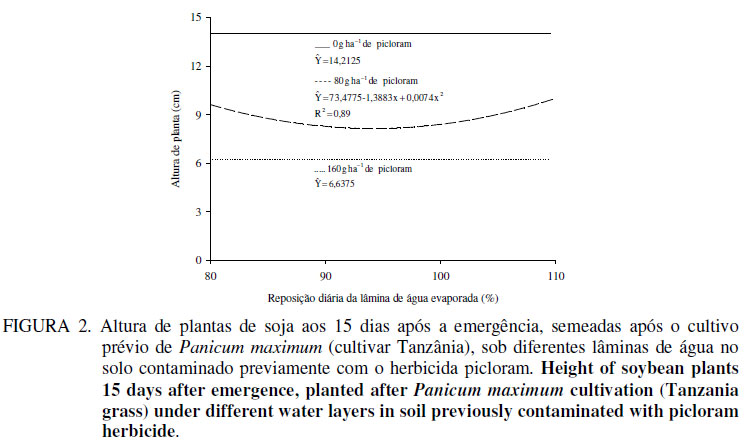The objective of this work was to evaluate the influence of water layers on phytoremediation of soil contaminated by picloram herbicide in Tanzania grass (Panicum maximum cv Tanzânia). The experiment was carried out in a greenhouse and groups of 12 treatments were made up of a combination of four daily levels of water replacement, by means of evaporated water layers (80; 90; 100 and 110% of water evaporated) and three picloram levels (0; 80 and 160 g ha-1). The amount of water evaporated was determined using two evaporimeters. After the herbicide had been applied, the phytoremediating plant species was planted. Ninety days after emergence, the Tanzania grass was dried and the aerial part was discarded. When this step had finished, soybean was planted as a bioindicator for picloram presence, and phytotoxicity, height, green and dry mass were determined. Soybean was very sensitive to picloram in the soil. It was noted that the extreme humidity levels evaluated, 80 and 110% of the daily replacement of the evaporated water layers, were favorable to remediation of soils contaminated with picloram herbicide. Optimization of phytoremediation is not significant when a residue corresponding to 160 g ha-1 of the herbicide was evaluated.
carryover; auxin agonists; soybean; water evaporation







